Archived News and Events
IIAD Says Goodbye to Jacob Sutherlun
February 2014: Jacob Sutherlun, International Relations Specialist in IIAD, recently accepted a position in the private sector in his home state of Texas. We are very appreciative of his work ably representing NOAA and the United States Government in many international fora over the past four and a half years, including the Group on Earth Observations, the International Astronautical Federation (which recognzied Jacob as a Young Space Leader in 2013, pictured here on the left), the Space Conference of the Americas, and the African Water Cycle Coordination Initiative. Jacob also led the Working Group on Capacity Building and Data Democracy (WGCapD) in the Committee on Earth Observation Satellites, advancing the cause of capacity development around the world. We wish him well in his new endeavors.
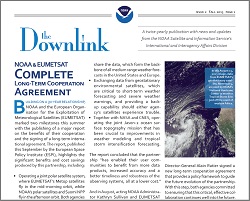
International and Interagency Affairs Division Publishes Second Issue of its Twice-Yearly Newsletter
November 2013: The NOAA Satellite and Information Service International and Interagency Affairs Division has published the second issue of its newsletter, The Downlink. The Downlink provides our international and interagency colleagues with short updates on all of our current and future satellite programs, and also current information on our budget cycle. Published twice per year, The Downlink also includes a feature article on exciting NESDIS developments and beautiful examples of our satellite imagery and derived products. Download The Downlink, Issue 2 here!
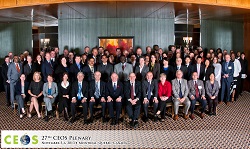
The 27th CEOS Plenary
November 2013: The Committee on Earth Observation Satellites (CEOS), the focal point for international coordination of space-related Earth Observation (EO) activities, just concluded its 27th Plenary meeting. Over 90 attendees representing many of the 54 CEOS Member and Associate Agencies participated in the Plenary, hosted by the Canadian Space Agency, and NOAA was represented by our NESDIS Assistant Administrator, Mary Kicza. Key outcomes included: the adoption of four internal documents that codify CEOS governance, processes, and strategic guidance; the endorsement of a new Working Group on Disasters and a Joint CEOS and Coordination Group for Meteorological Satellites (CGMS) Working Group on Climate, led by NOAA's John Bates; and agreement on the Montreal Statement, which highlights how CEOS Agencies have agreed to continue and enhance cooperation to respond effectively to Earth Observation users' needs. Jacob Sutherlun, IIAD, also became Chair of the Working Group on Capacity Building and Data Democracy. More information on CEOS and its work to optimize the benefits of EO through international cooperation is available on the CEOS website.
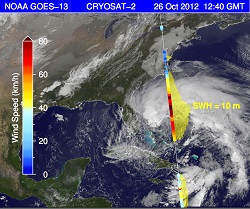
NOAA and the European Space Agency Collaborate with CryoSat Data
October 31, 2013: NOAA and the European Space Agency (ESA) completed an exchange of letters to facilitate continued collaboration on ESA's CryoSat mission. ESA has made data from CryoSat, a remarkable satellite designed to study ice, available to the world on a free, full, and open basis. Thanks to this data policy and the efforts of scientists from ESA and NOAA's Center for Satellite Applications and Research (STAR), NOAA created CryoSat ocean products that are now employed by ocean modeling and forecast centers worldwide, including NOAA's National Weather Service, to enhance near real-time marine and hurricane forecasts. This is a great example of the benefits of international partnerships and open data policies, and this new arrangement will allow our collaboration with ESA to continue and grow.
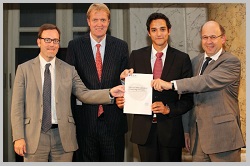
Major Report Published on the History and Benefits of NOAA-EUMETSAT Cooperation
September 18, 2013: Chuck Wooldridge, IIAD Deputy Director, joined top representatives from the European Organisation for the Exploitation of Meteorological Satellites (EUMETSAT) and the European Space Policy Institute (ESPI) to participate in an event unveiling a detailed report by ESPI's Arne Lahcen on the tremendous benefits and long history of NOAA and EUMETSAT cooperation in geostationary, polar-orbiting, and ocean altimetry satellites. The report concludes with a cost-benefit impact assessment, and states that the partnership "has enabled their user communities to benefit from more data products, increased accuracy and a better timeliness and robustness of the observing systems, all at a lower cost." The full report is available for download here.
NOAA Signs Long-Term Cooperation Agreement with its Key Partner, EUMETSAT
August 27, 2013: Building on a 30-year relationship, top officials from NOAA and the European Organisation for the Exploitation of Meteorological Satellites (EUMETSAT) signed a long-term cooperative agreement, ensuring continued space-based weather, water and climate monitoring. At a ceremony at the European Union (EU) Delegation in Washington, D.C., Kathryn D. Sullivan, Ph.D., NOAA Acting Administrator and Alain Ratier, EUMETSAT Director-General, signed the agreement. They were joined by Dr. Francois Rivasseau, Deputy Chief of Mission, EU Delegation to the United States. Full news story available here.
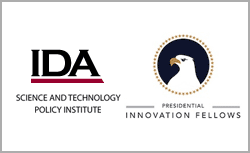
IIAD Says Goodbye to Two Valued Colleagues
June 2013: Mike Mineiro and Michelle Hertzfeld, International Relations Specialists in IIAD, have both recently accepted positions outside of NOAA. We hope their experiences in our office will serve them well in their new roles. Dr. Mineiro will be working on space and aeronautics policy and law at the Science and Technology Policy Institute, which is part of the Institute for Defense Analyses. Ms. Hertzfeld will be working at the Department of the Interior on Open Data issues as a Presidential Innovation Fellow. We wish them well in their new endeavours!
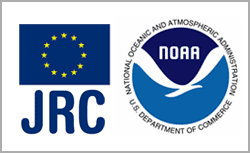
NOAA and the European Commission Joint Research Centre Sign One Year Progress Report
June 2013: Steering Group Co-chairs Chuck Wooldridge (NESDIS) and David Wilkinson (JRC) jointly signed a One Year Progress Report marking the May 31, 2012 signing of the Implementing Arrangement between the two organizations. A 2013-2014 Work Program was developed over the course of 2012 and 2013, and new topics of common interest further broaden the span of interactions between the two entities. This first year of cooperation highlighted that significant progress has been achieved in the implementation of joint activities. The report is available for download here.
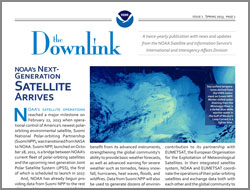
International and Interagency Affairs Division Introduces Twice-Yearly Newsletter
April 2013: The NOAA Satellite and Information Service International and Interagency Affairs Division has launched a newsletter, called The Downlink. The Downlink will provide our international and interagency colleagues with short updates on all of our current and future satellite programs, and also current information on our budget cycle. Published twice per year, The Downlink will also include a feature article on exciting NESDIS developments and beautiful examples of our satellite imagery and derived products. Download The Downlink, Issue 1 here!
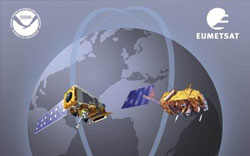
Annual NOAA-EUMETSAT Bilateral Meetings
December 6-7, 2012, Darmstadt, Germany: Mary Kicza and other NESDIS officials met with their EUMETSAT counterparts to discuss our existing close cooperation and potential future cooperation at EUMETSAT's headquarters in Darmstadt, Germany. Specific topics covered at this annual meeting includes our interdependent polar-orbiting satellite system, cooperation in geostationary satellites and backup arrangements, Jason satellites, and science cooperation.
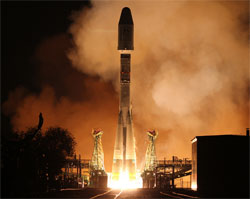
New European satellite key for weather, climate prediction. Partnership ensures vital data available for US and European weather models.
September 17, 2012: Today's launch of a European environmental satellite from Baikonur Cosmodrome in Kazakhstan will enable NOAA to continue capturing data that feed sophisticated, numerical prediction models used to forecast weather and climate in the United States, according to the agency's top satellite official. The Metop-B spacecraft is the second of three polar-orbiting satellites launched by the European Organisation for the Exploitation of Meteorological Satellites (EUMETSAT), a NOAA partner. "This launch is another milestone in a partnership that continues our wide-ranging ability to detect the early signs of severe weather, climate shifts and distress signals from emergency beacons in the U.S., Europe and around the world," said Mary Kizca, assistant administrator for NOAA's Satellite and Information Service. Full news story available here.
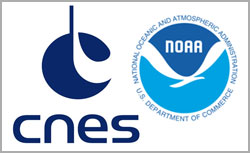
NESDIS Assistant Administrator (AA) met with President of the French Space Agency
NESDIS AA, Ms. Mary Kicza, met with President of the French Space Agency, Mr. Yannick d'Escatha, on August 3, 2012. They will discuss ongoing and planned cooperative activities with the French space agency (CNES), including the Argos and Search and Rescue programs and Jason series altimetry. They will also provide overviews and updates on their respective satellite programs. Ms. Kicza and Mr. d'Escatha hold annual meetings to reinforce NOAA-CNES bilateral cooperation. Ms. Kizca last met with Mr. d'Escatha in September 2011.
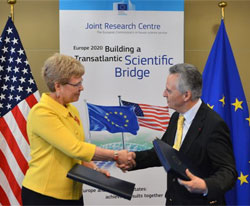
U.S., Europe sign agreement to strengthen scientific cooperation on climate, weather, oceans and coasts
May 31, 2012: Top leaders from NOAA and the European Commission's Joint Research Centre today signed an agreement, paving the way for cooperative science activities in the areas of climate, weather, oceans and coasts. Meeting in Brussels, Belgium, Jane Lubchenco, Ph.D., under secretary of commerce for oceans and atmosphere and NOAA administer and Dominique Ristori, director general of the JRC, signed the agreement, which includes: scientific training, exchanges of personnel, the shared use of scientific infra-structure, support for joint research, access to laboratory facilities and timely exchange of information. "Today's global challenges must be met by increased international cooperation that addresses climate, weather, oceans and coasts – issues that impact everyone in the world," Lubchenco said. "I am delighted NOAA and Europe's Joint Research Centre are taking this important step to increase our cooperation on science." Ristori continued, "We are pleased to announce that we have already identified four specific projects for collaboration between NOAA and the Research Centre. These projects collaborate on climate data records, tsunami modeling, space weather, and fisheries research. This underscores the rich potential for sharing science and innovation."
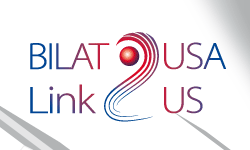
Conference on EU-US Science and Technology Collaboration
On Monday, December 12, 2011, the European Commission hosted a conference on science and technology collaboration between the EU and the US. The meeting was attended by many US science agencies and by representatives from the EC and EC embassies.The conference recognized that scientists in the EU and the US already collaborate extremely well, but sought to identify remaining barriers to further collaboration. The EC also discussed their new planned grant program, the successor to the Seventh Framework Proposal (FP7), to be called "Horizon 2020." If approved by the European Parliament and Council, this grant program could start in 2014. As with FP7, grants would be available to scientists from all over the world. Dr. Kerri-Ann Jones gave a keynote address to the group, noting the wide array of activities the USG is currently conducting with the EC. She also specifically noted that NOAA was negotiating an Implementing Arrangement to be signed with the EC, and that NOAA has also worked with EC member states on a bilateral basis (polar climate research with NOAA and marine protected area cooperation with Italy).